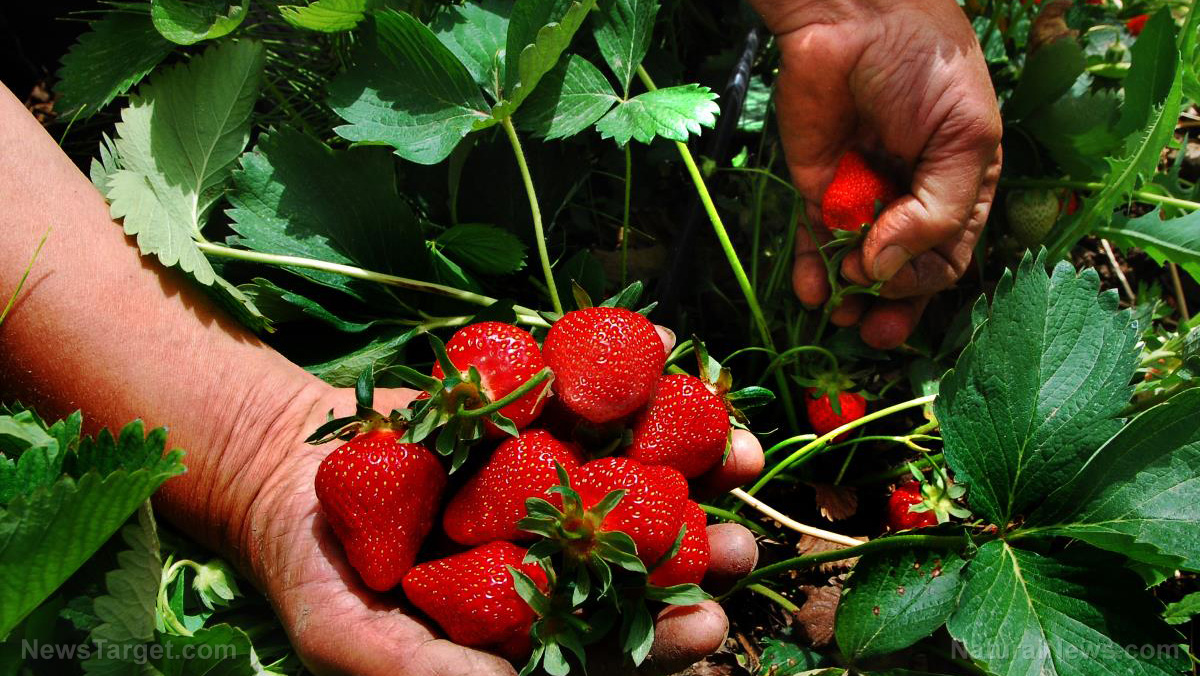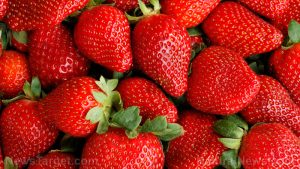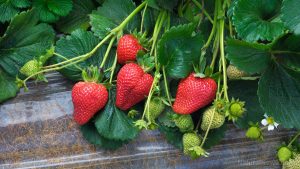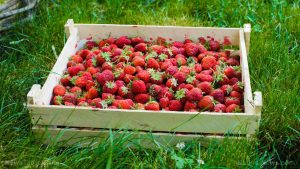
Advertisement
Fresh strawberries are a delicious, healthy treat. But if you love eating them year-round – whether fresh or as a homemade jam – you may want to learn how to grow your own berries by starting a strawberry patch.
Choose the right kind of strawberry for your garden
Strawberries are divided into two categories: June-bearing (also called spring bearing) and Everbearing.
- June-bearing strawberries are usually larger and juicier than everbearing varieties. They are best for fresh eating, making pies, preserves and strawberry honey jam. The major harvest season of June-bearing strawberries is in late spring to early summer. The berries all ripen over a three- to four-week period, after which the plants are done.
- Everbearing strawberries produce fruit all season long. This variety is best if you need a small supply of fresh strawberries throughout the growing year. Berries from this variety can be eaten fresh or used as a topping on cereal, ice cream, or yogurt. However, everbearing varieties are usually smaller with lower overall yields. The plants also tend to be more compact, which makes them a great choice for patios and planters.
If you plan on making lots of preserves, plant June-bearing strawberries in a perennial patch in your home garden.
Varieties to try for your strawberry patch
If you’re not sure where to start, here are some June-bearing strawberry varieties to consider:
- All-Star – A June-bearing variety with good flavor, size and texture.
- Earliglow – This June-bearing variety produces deep red and shiny berries.
- Ozark Beauty – This everbearing variety suits both cold and warmer climates. Plant Ozark Beauty strawberries if you’re using patio planters or a small patch.
Choose the best spot for your strawberry patch
If you live in an area with cold winters, plant early in the spring. But if you live in a warmer climate with more temperate winters, plant in late fall so you can harvest the first crop the following early spring.

Use the right kind of soil
Strawberries will thrive in fertile soil that drains well. Since strawberries are a perennial crop, the soil needs to be amended before planting so your crops will have years of good future growth.
Do this is by using compost. Before planting, work in generous amounts of compost into the soil. Use a five-gallon bucket of compost for every 10 plants.
If the soil is hard or clay-like, add a bit of fine sand.
Raise the planting ground
Strawberries grow healthy and strong when planted on raised ground within the rows.
Mound the soil to form rows about eight to 10 inches wide and a few inches high. Taper the mounds down on each side to help divert excess rain or water.
Plant young transplants 10 inches apart in the rows. Leave about 18 to 24 inches of space between rows so you can walk and harvest the berries.
Leave the upper portion of the crown just slightly above the level of the ground. The crown is the portion directly above the root area and below the first set of leaves.
While planting, press in the soil gently around the roots to prevent plants from heaving out.

Keep out weeds with a barrier
Weeds can destroy your crops because they steal nutrients from the soil needed by the strawberry plants.
To prevent weeds from springing up, cover the planting rows with landscape fabric before planting.
Create your planting rows and roll out the fabric over them. Cut holes out for plants by making a few slits with a knife to allow for planting and watering.
Tips for the long-term care of a strawberry patch
Once established, June-bearing strawberries grow well when cut back after they finish producing. Doing this helps the plants grow a stronger root system and encourages new growth and blooms for the next year.
Plants can be mowed off or cut back to the ground in the first few weeks of July.
Mowing off in early summer to give the plants enough time to grow back before winter. This helps protect plants and grow out their buds, which will become next year’s strawberries.
Never mow plants off in the fall because you risk losing your crop. If they are still growing, leave them be until next summer.
When it’s time to mow off, add an inch or so of compost on top of the plants. When the compost breaks down, it adds nutrients back in the soil that will nourish plants for next year’s crop.
Mulching the strawberry patch in winter
As late fall approaches, mulch your plants with four to six inches of straw, pine needles, or shredded leaves to keep them from freezing out.
Strawberries prefer soil on the acidic side and in winter pine needles make an excellent mulch.
Strawberries are perennial. But since plants age in years, your crops will begin to decline in production.
After four or five years, replace the original plants with new growth offshoots or the runner plants that have established from the main plant.
Do this when plants finish production by removing the old portion of the plant and replanting the newer offshoots. They will settle in by the end of the growing season to become next year’s “new” plants.

Protect your plants from pests
Take the necessary precautions to protect your strawberry patch from pests like snails, slugs and birds.
Snails and slugs
Using straw mulch will help protect your plants from snails and slugs since they hate crawling through it. If you’re worried about snails or slugs, monitor the strawberry patch for signs of nibbling and take immediate action.
Birds
When left unattended, birds can easily clean out a patch of strawberries. Prevent birds from destroying your crops but using some cover over the whole patch. Buy bird netting or row covers.
But don’t put the covers down while the plants are in flower or they won’t be pollinated. Wait until the fruits start to form.
Start a strawberry patch in your home garden so you can enjoy fresh berries or homemade jam throughout the year.
Sources:
Advertisements







